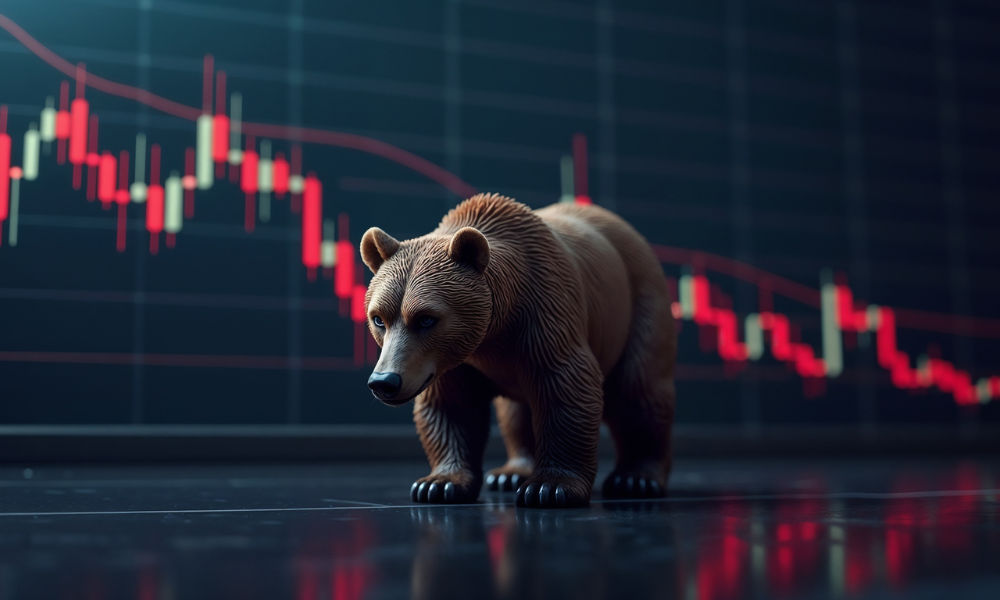

American investors remain largely bearish on the US stock market according to a survey released this week.
The Charles Schwab quarterly trader client sentiment survey reveals that 57% are bearish in the second quarter, with weakened expectations for the stock market over the next three months. This is up from 34% in the first quarter.
However, 38% believe they can withstand a market correction, 61% plan to buy the dip, 43% plan to add money to their investment portfolio, and 49% plan to invest in individual stocks. Almost half of traders plan to moderate their risk or market exposure and at least 43% plan on hedging with options and 29% are buying gold, crypto, and other alternative assets.
The political environment in Washington is the most cited concern (23%) followed by global geopolitics (13%), and uncertainty due to market volatility (12%).
Recession risk has increased sharply from the first quarter, rising from 33% to 63% and most respondents expect inflation to remain elevated for the foreseeable future. Although most expect at least one Fed rate cut, they don’t expect a reduction of more than 100 basis points.
“The market volatility we saw in late Q1 and early Q2 understandably led traders to feel more bearish, but the research also reinforces what we know - that traders see opportunity in volatility,” said James Kostulias, head of Trading Services at Charles Schwab. “More recently, we’ve seen the markets move in an upward trend. The fact that traders have remained invested and engaged is a testament to their resilience and adaptability. The volatility we saw is also a reminder of the critical importance of trading on a strong and trusted platform backed by comprehensive education and tools – especially in risk management – along with access to live, expert support when needed.”
There are several trends showing where investors are focused:
Kostulias added that rather than sitting on the sidelines, investors are actively mitigating risk and positioning for opportunities.
“We’re seeing clear evidence of this in the way traders are engaging with the tools and resources we provide. We were already the industry leader in trading volumes, but we saw a sharp increase in Q1 to nearly 7.4 million trades a day, including strong engagement in overnight trading session thanks to our recently expanded 24/5 trading capabilities and our strong futures offer. We set an all-time record during the same period with 500 million logins. And engagement with our education is skyrocketing; we saw a 40x increase in consumption of our market commentary and research in Q1 and have expanded our lineup of virtual and in-person education events in 2025 to meet client demand.”

Chasing productivity is one thing, but when you're cutting corners, missing details, and making mistakes, it's time to take a step back.

It is not clear how many employees will be affected, but none of the private partnership’s 20,000 financial advisors will see their jobs at risk.

The historic summer sitting saw a roughly two-thirds pass rate, with most CFP hopefuls falling in the under-40 age group.

"The greed and deception of this Ponzi scheme has resulted in the same way they have throughout history," said Daniel Brubaker, U.S. Postal Inspection Service inspector in charge.

Elsewhere, an advisor formerly with a Commonwealth affiliate firm is launching her own independent practice with an Osaic OSJ.
Stan Gregor, Chairman & CEO of Summit Financial Holdings, explores how RIAs can meet growing demand for family office-style services among mass affluent clients through tax-first planning, technology, and collaboration—positioning firms for long-term success
Chris Vizzi, Co-Founder & Partner of South Coast Investment Advisors, LLC, shares how 2025 estate tax changes—$13.99M per person—offer more than tax savings. Learn how to pass on purpose, values, and vision to unite generations and give wealth lasting meaning
